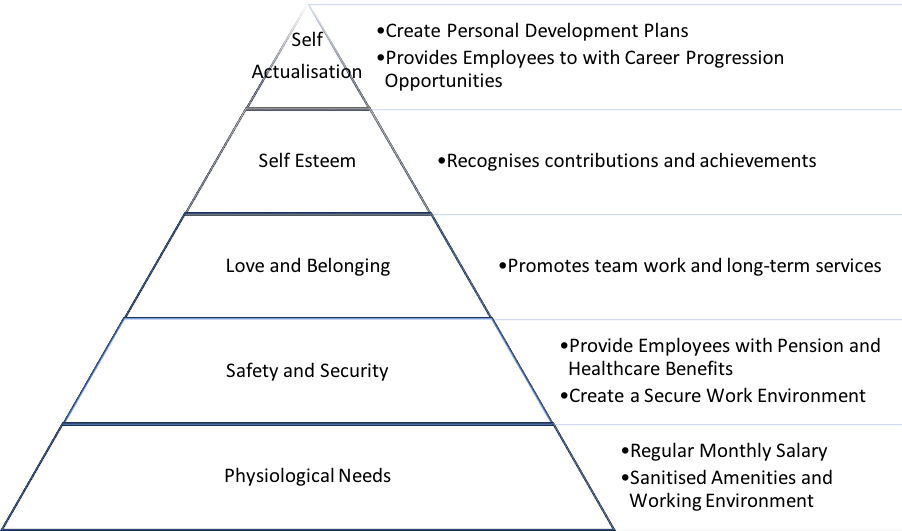Characteristics of Effective Key Performance Indicators7/9/2018
In order to remain competitive, an organisation should analyse its mission, identify its stakeholders, and define its goals. In addition, it needs to establish Key Performance Indicators (KPIs) to measure its corporate progress. In this article, we'll introduce the fundamental characteristics of effective KPIs.
Comparative
1. Comparative over Time
Relevant KPIs would measure an organisation’s relative performance, such as its market position in relation to its competitors’. In addition, comparative KPIs would allow an organisation to assess their employees’ relative performance—they would enable managers to penalise underperforming employees, and reward those who are meeting their targets. [1] According to a corporate study by PricewaterhouseCoopers LLP (2007), an organisation should monitor their performance over time in order to assess their strategies’ success. They should also analyse conflicting trends in their data, such as how an increasing measure may not necessarily be beneficial to the organisation, and how their managers intend to mitigate or sustain these trends. Organisations should also explain changes in their KPIs, which may evolve with changes in an organisation’s strategic objectives, or when an organisation obtains additional data. 2. Comparative with Rivals In order to create an accurate assessment of their corporate performance, an organisation should also compare their performance with notable firms in their industry. This comparison would provide the organisation with a clearer understanding of their competition, as well as relevant benchmarks to gauge their corporate performance. [2] Measurable
Managers should generate their KPIs once they have defined a clear and specific objective for their organisation, as a well-defined objective would ensure that the organisation’s resources are effectively allocated. Examples of clear and specific objectives in a free market system may include the creation of economic value, or sustainable long term growth.
Once their organisation’s objective is defined, managers may generate measurable KPIs that would reflect the direct relationship between an organisation’s metrics and their results. These KPIs must also prove that the results of a strategic activity, which are recorded within a specified timeframe, would be consistent. [3] 1. Guidelines for Measurable KPIs Measurable KPIs would measure fundamental statistics in each sector of an organisation. For example, relevant KPIs in the sales division should achieve the following:
2. Steps to creating Measurable KPIs An effective KPI in the Sales Division may adhere to the following guidelines:
In order to create measurable KPIs, managers should identify the needs of the organisation’s shareholders at an early stage of the strategy’s formation. In order to create accurate predictions of their organisation’s performance, managers should also refer to data that is collected from long-term assessments, such as studies that were conducted over a period of six months. [4] Relevant
1. Relevant to a specific division
Certain KPIs may be interpreted according to the distinctive needs of each corporate sector. For example, if an organisation intends to "Increase Customer Satisfaction", its respective departments may define this KPI in various ways:
2. Relevant across multiple divisions Although an organisation may gauge productivity from data collected from its individual sectors, it may conduct a more accurate assessment of its productivity by selecting relevant KPIs that are shared across all of its divisions. Admittedly, this process may be challenging, as each division may use distinctive metrics to measure their performance. In order to overcome this challenge, Marr (2010) suggests storing common definitions in a shared repository, which may consolidate the data in their corporate reports. [5] 3. Relevant to Strategic Objectives Managers must allocate their organisation’s scarce resources into activities that would achieve their strategic objectives. Organisations should include KPIs in their corporate reports to inform their stakeholders about their corporate strategies, as well as their viability. Organisations should not select KPIs that are isolated from their corporate strategies and objectives, as they will not provide stakeholders with enough information to make informed decisions about the company’s performance. [6] Organisations should be wary about selecting common metrics that are not included within the company’s existing system. According to Marr’s research (2010), KPIs should be customised to fulfil the distinctive objectives of each organisation, and popular strategic indicators may not necessarily be required in every organisation. In addition, Marr states that distinctive metrics would provide an accurate assessment of an organisation’s performance. [7] Motivating
Actionable KPIs would allow managers to actively execute corporate strategies, and stimulate incremental improvements in an organisation’s performance. [8]
In order to create these KPIs, managers may follow the following models: 1. Carrot-and-Stick Approach The “carrot-and-stick” approach motivates employees with a combination of rewards and punishments. Managers identify specific targets for each KPI, document the corporation’s holistic progress towards the targets, and motivate their employees to reach those targets by rewarding progress and penalising underperformance. There are multiple ways that this approach may be exercised. For instance, a report by IBM Cognos business intelligence (BI) and performance management solutions suggests how scorecards may monitor corporate performance. Once managers have established stretch targets for their divisions, a senior executive team, or a group of peers and partners, may use these scorecards to evaluate employees’ performance towards these corporate objectives. As a result of this procedure, managers would have empirical data for their division’s productivity, and they may be able to deliver appropriate rewards or penalties based on each employee’s performance. [9] Although this approach is popular across multiple industries, recent studies have questioned its ability to encourage employees to become self-motivated. [10] Employees who are driven towards productivity with external rewards and punishments may begin to focus on their employers’ targets and incentives (e.g. financial rewards) instead of the organisation’s main objectives (e.g. providing customers with quality service). [11] As such, organisations may choose to apply alternative motivational techniques.
Adapted from Maslow’s Hierarchy of Needs
2. Creating Pyramids for Corporate Performance
2.1. Maslow’s Hierarchy of Needs Maslow’s Hierarchy of needs is a pyramidal diagram of seven fundamental human needs. According to psychologist Abraham Maslow, individuals must fulfil the needs at the pyramid’s bottom tier before those on its subsequent levels. [12] Employers may consider these fundamental needs when selecting ways to motivate their employees. For instance, they may consider how an individual’s basic physiological and security needs are met in Singapore’s stable environment and vibrant economy. Since these basic needs are attained, managers may provide their employees with opportunities to fulfil other social needs by:
2.2. Building a Corporate Pyramid Andreea Filip (2013) encourages organisations to categorise their specific objectives in a hierarchical pyramid. [13] This procedure would allow managers to identify the organisation’s relevant KPIs, and guide their employees’ performance. Bottom Tier Managers should place their division’s fundamental KPIs in their corporate pyramid’s bottom tier. For instance, the marketing departments of new e-commerce websites may prioritise traffic generation as their primary objective. Hence, they may place relevant KPIs, such as their website’s total visits and page views, at the bottom of their divisional pyramids. Middle Tier A corporate pyramid’s middle tier should include KPIs that are relevant with the organisation’s growth. For instance, an e-commerce site may expand its audience through online advertising. In order to determine effective forms of digital marketing, marketing executives may choose to monitor the KPIs that are located on the pyramid’s middle tier, such as an organisation’s Pay-per-click Cost per Acquisition or Pay-per-click Cost per Conversion. Top Tier The uppermost tier of an organisation’s corporate pyramid includes KPIs that may only be measured when businesses are fully developed. These metrics would allow an organisation to monitor and maintain its competitive advantage. For instance, once developed e-commerce platforms have garnered steady traffic and healthy sales figures, their marketing divisions may measure Visitor Loyalty and Brand Awareness. [14]
references
[1] Likierman, A. (2009). The Five Traps of Performance Management. Retrieved from https://hbr.org/2009/10/the-five-traps-of-performance-measurement
[2] PricewaterhouseCoopers LLP. (2007). Guide to key performance indicators. NY, U.S.A. Published by PricewaterhouseCoopers LLP. pp. 9. [3] Mauboussin, Michael J. (2012). The True Measures of Success. Retrieved from https://hbr.org/2012/10/the-true-measures-of-success [4] Likierman, A. (2009). The Five Traps of Performance Management. Retrieved from https://hbr.org/2009/10/the-five-traps-of-performance-measurement [5] Marr, B. (2010). How to design Key Performance Indicators, Management Case Study, The Advanced Performance Institute (www.ap-institute.com). pp. 6. [6] PricewaterhouseCoopers LLP. (2007). Guide to key performance indicators. NY, U.S.A. Published by PricewaterhouseCoopers LLP. pp. 8. [7] Marr, B. (2010). How to design Key Performance Indicators, Management Case Study, The Advanced Performance Institute (www.ap-institute.com). pp. 6. [8] Marr, B. (2010). How to design Key Performance Indicators, Management Case Study, The Advanced Performance Institute (www.ap-institute.com). pp. 6. [9] IBM Corporation. (2010). How KPIs can help motivate and reward the right behavior. ON, Canada. Published by IBM Corporation. pp. 2-3. [10] Esposito, M. (2015). What Really Motivates Your Employees? Retrieved from http://www.autodealermonthly.com/channel/certification-training/article/story/2015/06/what-really-motivates-your-employees.aspx [11] IBM Corporation. (2010) How KPIs can help motivate and reward the right behavior. ON, Canada. Published by IBM Corporation. pp. 2. [12] D. Martin and K. Joomis. (2007) Building Teachers: A Constructivist Approach to Introducing Education. Belmont, CA: Wadsworth. pp. 72–75. [13] Filip, A. (2013). Maslow pyramid for online marketing KPIs. Retrieved from https://blog.omniconvert.com/maslow-pyramid-for-online-marketing-kpis.html [14] Filip, A. (2013). Maslow pyramid for online marketing KPIs. Retrieved from https://blog.omniconvert.com/maslow-pyramid-for-online-marketing-kpis.html
0 Comments
Leave a Reply. |
Join Our Mailing List
Receive fresh insights about finance, HR and strategic planning.
Contact UsBusiness Intelligence and 8nalytics Pte Ltd © 2021
Email
admin@8nalytics.com Location 190 Middle Road #16-08 Fortune Centre Singapore 188979 Phone +65 6255 5101 +65 9655 8948 |
Sitemap |


